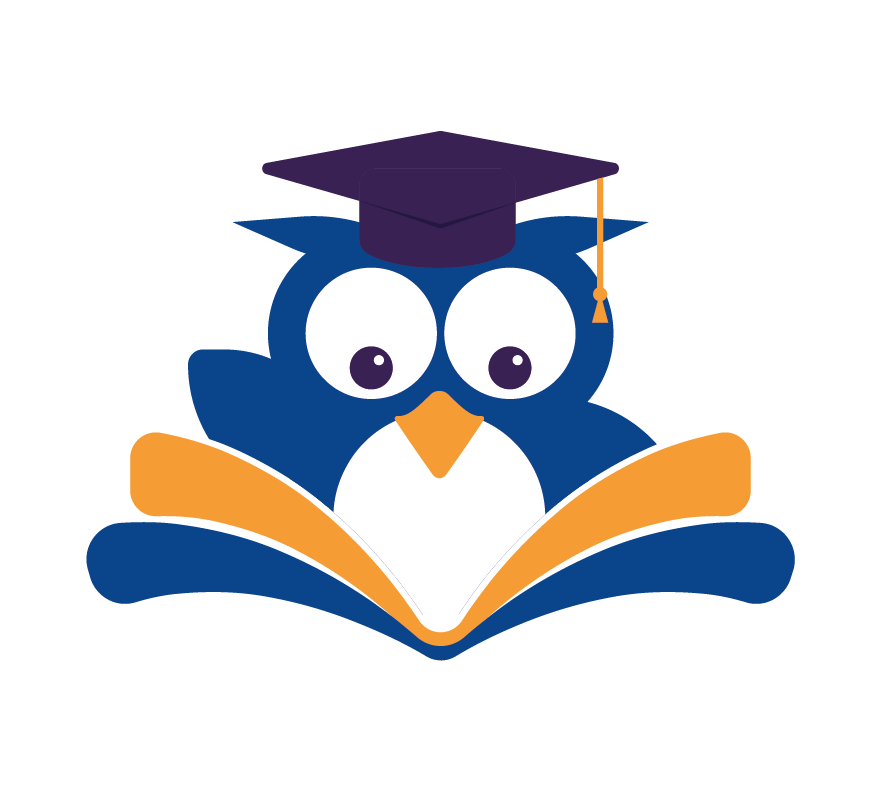Embracing lifelong learning can change your life. It means being open to new things, seeking knowledge, and growing in many ways. This growth is both personal and professional.
Life brings us many challenges and chances. By always learning, we can handle these better. It’s not just about school; it’s about being curious and using what we learn in real life.
When you become a voracious learner, you unlock many doors. You don’t just learn new things; you become more flexible, strong, and engaged.
Key Takeaways
- Embracing lifelong learning fosters personal growth and skill development.
- Adopting a mindset of continuous education helps navigate life’s challenges.
- Being a voracious learner opens up new possibilities and opportunities.
- Lifelong learning is about being curious and seeking new knowledge.
- It’s a journey that makes you more adaptable and resilient.
The Mindset of a Voracious Learner
To become a voracious learner, you need curiosity, a growth mindset, and the ability to bounce back from failures. First, understand what makes a voracious learner.
Cultivating Curiosity and Wonder
Cultivating curiosity is key for a voracious learner. It means being open to new things and wanting to learn. We can grow this by asking questions, exploring new topics, and looking at things from different angles. Curiosity drives our love for learning, pushing us to try new things.
Embracing Growth Over Fixed Mindset
Having a growth mindset is important for overcoming hurdles. It’s about believing we can get better with effort and hard work. This mindset lets us see challenges as chances to grow, not threats to our pride. With a growth mindset, we become more flexible and resilient learners.
Developing Learning Resilience
Being resilient is key for dealing with learning setbacks. It involves two main parts:
- Seeing failure as feedback
- Keeping motivated when things get tough
Handling Failure as Feedback
When we fail, it’s important to see it as a chance to learn and get better. Failure is a chance to learn and improve. By figuring out what went wrong, we can do better next time.
Maintaining Motivation During Challenges
Keeping motivated is vital when things get hard. We can do this by setting reachable goals, celebrating small wins, and remembering why we started learning. Staying motivated helps us keep going, even when it’s tough.
Why Become a Voracious Learner in Today’s World
In today’s fast-changing world, becoming a voracious learner is essential. It’s not just a choice, it’s a must. We need to keep learning new skills and knowledge to stay relevant in our personal and professional lives.
Adapting to Rapid Technological Change
Technology is advancing at an incredible pace. To keep up, we must be ready to learn new tools and methods. This helps us grow in our careers and make better choices every day.
Career Advancement and Job Security
Staying educated and skilled is key to career growth and job security. As industries change, the need for adaptable workers increases. By always learning, you become more employable and open doors to new opportunities.
Personal Fulfillment and Cognitive Health
Learning for life brings personal satisfaction. It keeps our minds sharp, helping to prevent age-related cognitive decline. Learning new things also boosts our self-confidence and gives us a sense of achievement.
Building Versatility in an Uncertain Future
The future is full of unknowns, with new challenges popping up all the time. By learning a wide range of skills, we become versatile. This versatility helps us handle uncertain times better and adapt to new situations more easily.
Becoming a voracious learner is a smart choice for a brighter future. It’s about adopting a mindset that values ongoing learning and skill development.
Assessing Your Learning Style and Preferences
Figuring out your unique learning style is key to learning better. Knowing how you learn best can make your education and personal growth better.
Visual, Auditory, Reading/Writing, and Kinesthetic Learning
Most people have a main learning style: visual, auditory, reading/writing, or kinesthetic. Finding your primary learning style helps you learn better and remember more.
- Visual learners do well with diagrams, charts, and pictures.
- Auditory learners learn best from listening, like in lectures or audiobooks.
- Reading/Writing learners like written stuff and taking notes.
- Kinesthetic learners learn by doing things hands-on.
Finding Your Peak Learning Times and Energy Cycles
Your energy levels affect how well you learn. Pay attention to your body’s natural rhythms to learn when you’re most alert.
Creating Your Ideal Learning Environment
Having a good learning space is crucial for staying focused. It’s about making both your physical and digital areas great for learning.
Physical Space Optimization
Make your learning area comfortable, tidy, and bright. Use good furniture and keep away from distractions.
Digital Environment Management
Keep your digital stuff organized to learn better. Use apps and software to stay on track and avoid online distractions.
Knowing your learning style, best learning times, and ideal space helps you learn more effectively. This way, you can reach your personal growth goals.
Building a Sustainable Learning Routine
Sustainable learning means making habits for ongoing education and growth. You need a routine that’s both steady and flexible.
Time-Blocking for Regular Learning Sessions
Time-blocking is a great strategy. It means setting aside certain times for learning. This makes learning a must-do part of your day.
For example, you could learn from 8:00-9:00 AM every day. Consistency is key for progress in lifelong learning.
Spaced Repetition and Interleaving Techniques
Spaced repetition and interleaving are key techniques. Spaced repetition helps solidify learning in your memory. Interleaving mixes different learning materials to deepen understanding.
Balancing Depth and Breadth in Learning
It’s important to balance deep and wide learning. Dive into subjects you love, but also explore many topics. This broadens your knowledge.
Use a learning matrix to balance your learning:
| Subject | Depth | Breadth |
|---|---|---|
| Programming | Advanced Python | Introduction to Java |
| Marketing | SEO Strategies | Social Media Basics |
Tracking Progress and Celebrating Milestones
Tracking your progress and celebrating milestones keeps you motivated. Ken Robinson said,
“The role of education is to prepare young people for the challenges of the future, and that means giving them the skills to be adaptable, to be creative, and to be innovative.”
Celebrating your wins, big or small, shows your dedication to learning.
Effective Note-Taking Strategies for Retention
Good note-taking is key to learning well. It helps you remember and recall information easily. We’ll look at different note-taking strategies to find what works best for you.
Let’s explore some effective techniques. The The Cornell Method is one. It divides your paper into two parts. A narrow column for keywords and questions, and a wide column for notes.
The Cornell Method for Structured Notes
The Cornell Method helps organize your thoughts and review material well. It structures your notes in a way that makes it easy to spot key concepts and review them fast.
Mind Mapping and Visual Notes
Mind mapping is another great technique. It involves making a visual map of your notes. You use circles, arrows, and colors to link ideas. It’s great for visual learners, as it helps create a mental picture of the information.
Digital Note-Taking Tools and Systems
Today, there are many digital tools for note-taking. Apps like Evernote and OneNote, and digital pens and tablets are just a few examples. Trying out different tools can help you find the best fit for your learning mindset.
Retrieval Practice Through Note Review
Lastly, retrieval practice is key to keeping information. Reviewing your notes and testing yourself on the material boosts your ability to recall information when needed.
By using these note-taking strategies every day, you’ll improve your knowledge acquisition and self-improvement goals. “The key to learning is not the amount of information you gather, but how much you retain and apply.” Regular practice and review will make these strategies a natural part of your learning process.
How to Become a Voracious Learner Through Reading
Becoming a voracious learner through reading is more than just reading a lot. It’s about reading smartly and with purpose. This section will show you how to use effective reading strategies to improve your learning. By using the right techniques, you can better understand and enjoy what you read.
Speed Reading Techniques That Actually Work
Speed reading is great for voracious learners. It lets you read more in less time. But, it’s important to keep comprehension in mind.
Chunking and Pattern Recognition
Chunking is a good technique. It involves grouping words into meaningful units instead of reading each word separately. This method uses pattern recognition to make information easier to process.
Reducing Subvocalization
Another technique is reducing subvocalization. This means not saying words out loud in your head as you read. It helps you read faster without losing understanding.
Active Reading and Strategic Annotation
Active reading means really engaging with what you’re reading. You can do this by annotating the text. This includes highlighting important parts, jotting down notes, and asking questions.

Building a Personal Library System
Having a personal library system helps you keep track of your books. You can organize them by category, keep a reading log, and use digital tools to monitor your progress.
| Category | Organization Method | Tracking Tool |
|---|---|---|
| Fiction | Alphabetical by Author | Goodreads |
| Non-Fiction | By Subject | Personal Spreadsheet |
| Professional Development | Categorized by Topic | LibraryThing |
Balancing Fiction and Non-Fiction for Holistic Learning
Having a mix of fiction and non-fiction books is key. Fiction boosts creativity and empathy. Non-fiction gives you factual knowledge and practical skills.
By using these reading strategies every day, you can become a voracious learner. This supports your lifelong learning goals.
Leveraging Technology for Continuous Learning
Using technology is key for those who want to keep learning. Today, we have many tools and resources that help us learn more. These tools can make our learning journey better.
Online Courses and MOOCs: Finding Quality Content
Online courses and MOOCs make learning easy for everyone. Sites like Coursera, edX, and Udacity have courses from top schools. When picking courses, look for ones with good ratings, relevant topics, and fun activities.
Podcasts, Audiobooks, and Educational Apps
Podcasts, audiobooks, and apps make learning easy to fit into our lives. We can listen to podcasts on the go or while working out. Audiobooks are great for learning new things in an interesting way. Apps like Duolingo and Khan Academy make learning fun and interactive.
Using AI Tools to Enhance Learning Efficiency
AI tools change how we learn by making it personal. They help find what we don’t know, give feedback, and adjust lessons for us. This makes learning more effective.
Digital Knowledge Management Systems
Good knowledge management is important for learning all the time. Tools like Evernote, Notion, and Obsidian help us keep our notes and information organized. This makes it easier to review and grow our knowledge.
| Tool | Description | Benefits |
|---|---|---|
| Coursera | Online learning platform offering courses from top universities | Access to high-quality education, flexible learning |
| Evernote | Digital note-taking and knowledge management tool | Organized note storage, tagging, and search functionality |
| Duolingo | Language learning app using gamification | Engaging, interactive learning experience, free |
Social Learning: Learning with and from Others
Learning with others does more than just teach you new things. It builds a community around you. This way of learning boosts your personal growth and self-improvement.
Finding Your Tribe
Finding the right group to learn with can change everything. Look for online forums, social media groups, or local meetups that match your interests. Here, you can share ideas, ask questions, and learn from those who are also on their learning journey.

Teaching Others
Teaching what you know to others is a powerful way to learn more. When you explain a concept to someone, you get to understand it even better. This can be as simple as teaching a new skill to a friend or family member.
Collaborative Learning
Being part of a study group can keep you motivated and help you learn from others. Collaborative projects let you combine your knowledge and skills. Together, you can tackle complex topics from different perspectives.
Applying What You Learn: From Knowledge to Action
The true power of learning is not just getting knowledge. It’s about using it in real life. As we keep learning, it’s key to connect what we learn with how we use it.
The Learning-Application Loop
Learning and using what we learn is a cycle. We learn new things, use them, and then think about how they worked. This cycle helps us get better and learn more.
Creating Personal Projects Based on New Knowledge
One great way to use what we learn is by starting personal projects. This could be writing a blog or making a software app. It’s a way to put our new skills to the test.
| Project Idea | Skills Developed | Potential Impact |
|---|---|---|
| Starting a personal blog | Writing, SEO, content creation | Sharing knowledge, building a personal brand |
| Developing a mobile app | Programming, problem-solving, design | Solving real-world problems, creating new opportunities |
Integrating Multiple Disciplines in Real-World Applications
Many problems need solutions from different areas of study. By mixing knowledge from various fields, we can find better and more creative answers.
Measuring the Impact of Applied Learning
To see if our learning is working, we need to track its results. This could mean checking how our projects do, getting feedback, or thinking about how we’ve grown.
Conclusion: Your Lifelong Learning Journey
Starting a lifelong learning journey is incredibly rewarding. It leads to personal growth and self-improvement. You’ve learned that becoming a voracious learner means being curious, having a growth mindset, and using effective learning strategies.
By making these habits part of your daily life, you’ll be ready for quick changes in technology. You’ll also move forward in your career and find personal fulfillment. Remember, lifelong learning is ongoing, and each step gets you closer to your goals.
Keep being curious and exploring new interests. Apply what you learn to real-life situations. With hard work and dedication, you’ll open up new opportunities and enjoy the process of learning.
So, keep learning, growing, and striving to be your best self. The world needs your unique view and skills. Let’s all become voracious learners together!

